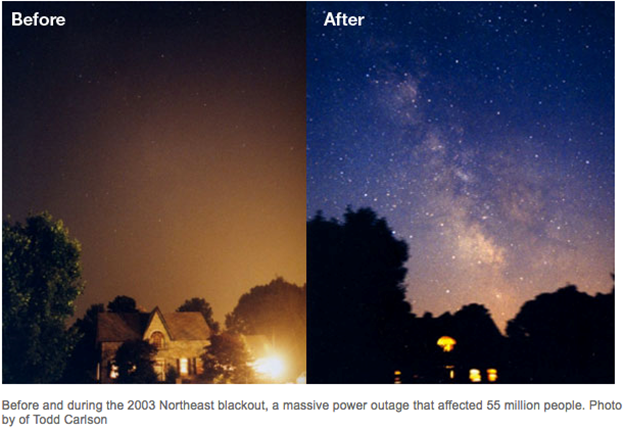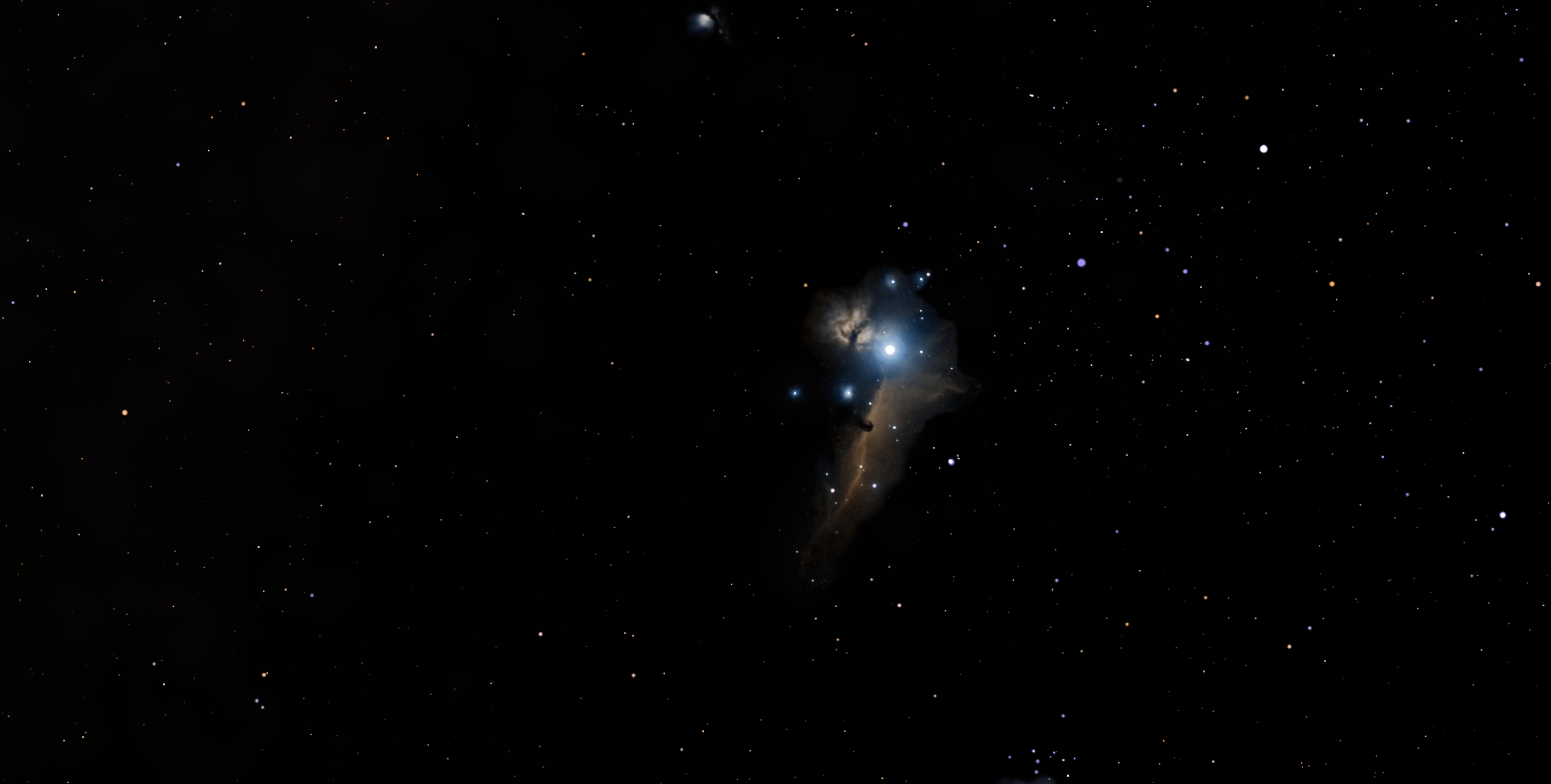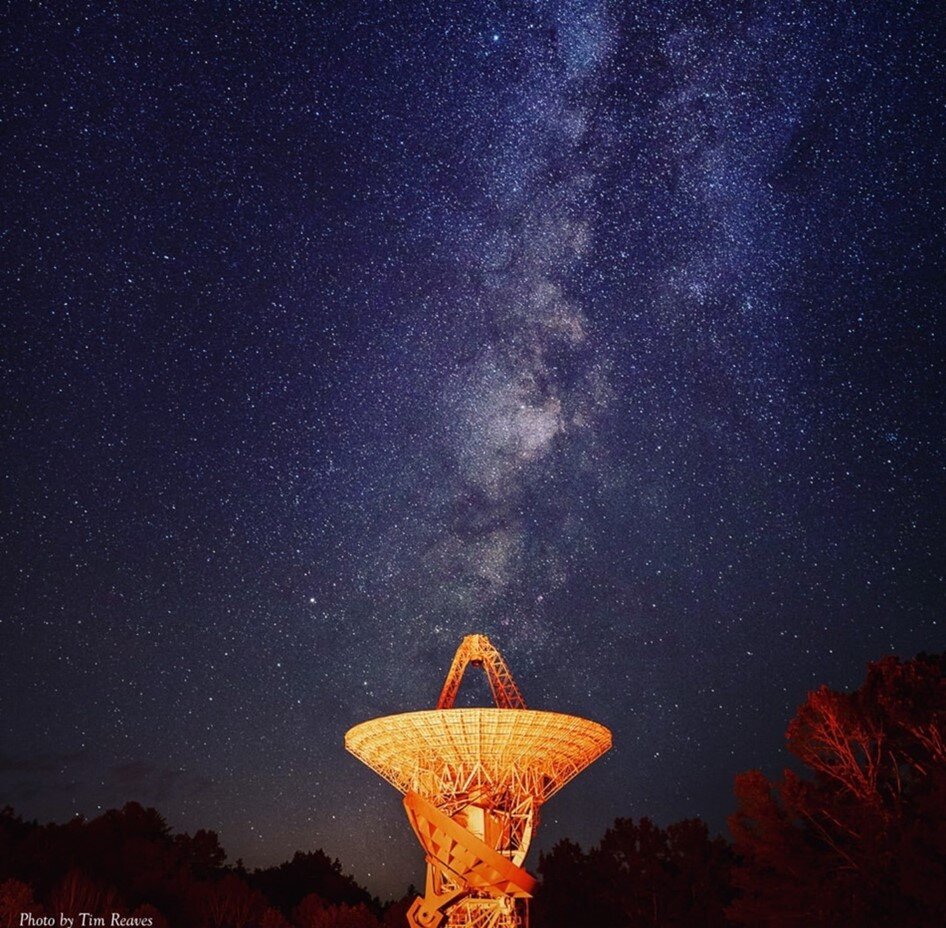The compositions of stars are determined through Spectroscopy. The distances between the Earth and other stars besides our sun are huge.

Astronomy Light Pollution Mcauliffe Shepard Discovery Center
Describe two 2 different methods that astronomers use to determine the distance of stars.

. How do astronomers use light to study stars and planets. A telescope is a tool that astronomers use to see faraway objects. When astronomers look at an objects spectrum they can determine its composition based on these wavelengths.
Describe how astronomers are able to use the light from a distant star to determine what elements make up the stars. 1by measuring the distance from Earth to various galaxies 2by calculating the ages of old nearby stars. Most telescopes and all large telescopes work by using curved mirrors to gather and focus light from the night sky.
Five things that an astronomer might do in a typical day -- or night since many astronomers dont start. The bigger the mirrors or lenses the more light the telescope can gather. Approximate word on Describe two kinds of information other than visible light that astronomers use is each a kind of electromagnetic radiation if yes is it higher or lower every than visible light.
Describe two ways that scientists calculate the age of the universe. Using km or miles to say how far these stars are from us becomes meaningless the numbers would be so large that it. By studying the motion and the amount of light that a star emits astronomers can determine the chemical composition of the star.
Each element absorbs light at specific wavelengths unique to that atom. Light is then concentrated by the shape of the optics. Describe two 2 different methods that astronomers use to determine the distance of stars.
If not how is it detected and identify something astronomers study with each kind of information A- B 1 lii E Fs Approximate word count Explain the far future of the. Astronomers do many different things depending on what type of a facility they work in. Sunlight separates into ROY G.
For this technique to work correctly though astronomers must first use the parallax method to get the distances to some of the closer Cepheids. Today this process uses instruments with a grating that spreads out the. This chemistry allows astronomers to classify the different components to help keep track of different stars.
Separate the wavelengths of light using a prism. The most common method astronomers use to determine the composition of. Also Know how do astronomers study the composition of distant objects in the universe.
Astronomers also use chemistry to help identify the different elements that make up a star. Describe how astronomers are able to use the light from a distant star to determine what elements make up the stars. See answers 1 Ask for details.
Answer 1 of 5. It is the study of the absorption and emission of light and other radiation by matter as related to the dependence of these processes on the wavelength of the radiation. Astronomers can measure parallax by measuring the position of a nearby star very carefully with respect to more distant stars behind it then measuring those positions again six months later when the Earth is on the opposite side of its orbit.
BIV If you disperse spread out the light from stars they give off. Measuring a Cepheids apparent brightness -- how bright it looks from Earth -- allows astronomers to calculate its true brightness which in turn reveals its distance. A stars mass effects the way atoms in its atmosphere act giving very narrow spectrum lines.
Parallax is the best method astronomers use to measure the distance to stars that are less than 1000 light-years from Earth. Astronomers use spectrometers spectrometers to study the light from a telescope from AA 1. The most common method astronomers use to determine the composition of stars planets and other objects is spectroscopy.
Thus in some rare cases astronomers have been able to infer the presence of distant planets by the way that they magnify the light of even more distant stars.

Visible Light Telescopes Astronomy 801 Planets Stars Galaxies And The Universe

Astronomy Light Pollution Mcauliffe Shepard Discovery Center

Infrared Astronomy More Than Our Eyes Can See Sofia Science Center
0 Comments